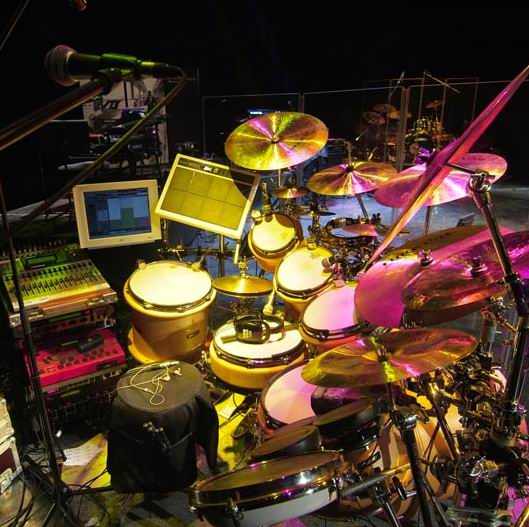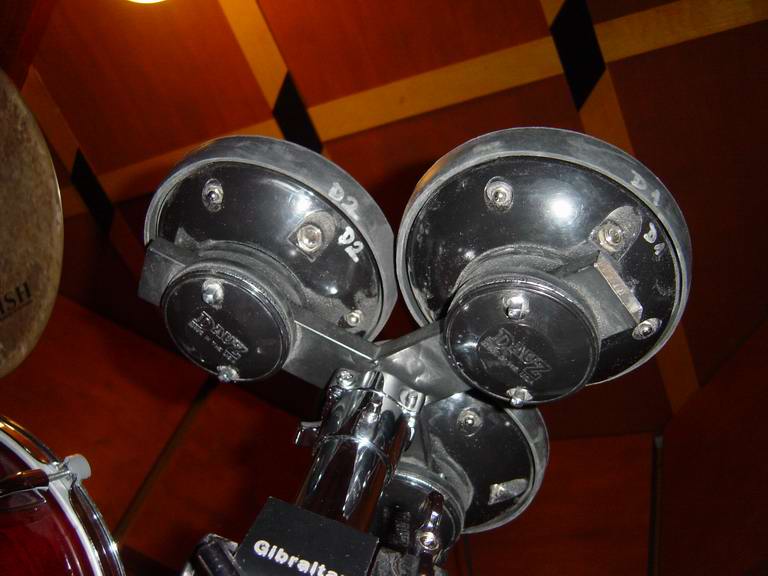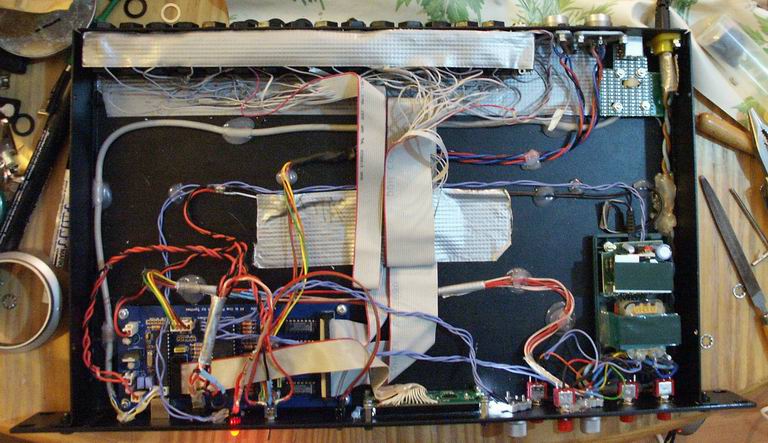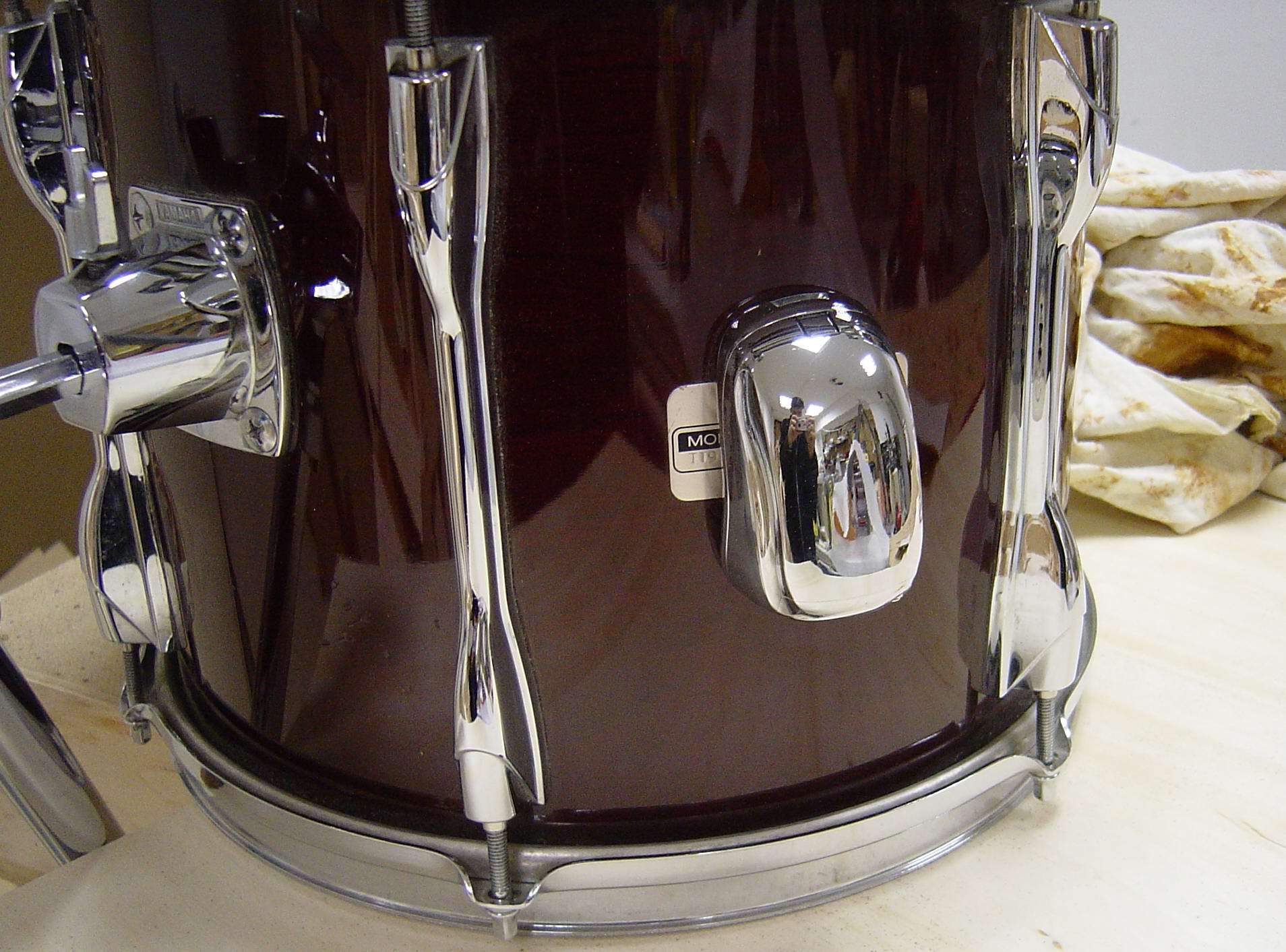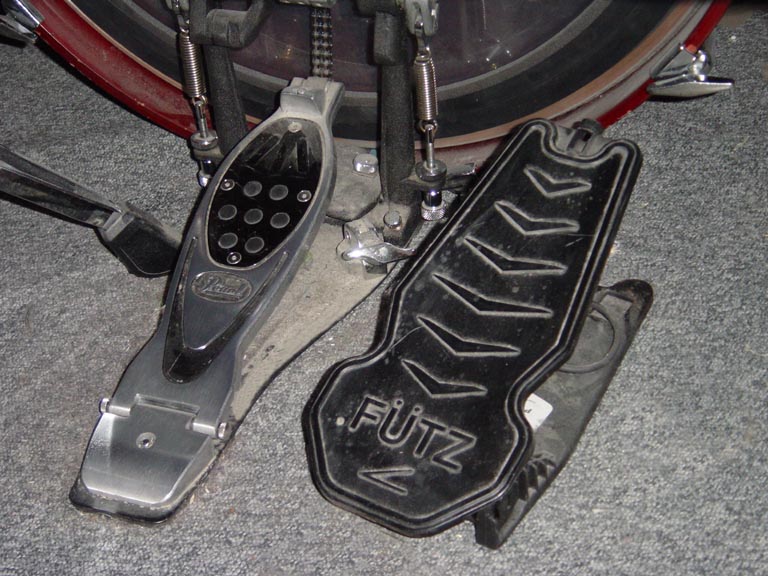Basic concepts and challenges of drum triggering
|
|
The phenomenons discussed below apply to drum pads as well, but they have a much more serious effect when triggering acoustic drums. Double triggering It must be taken into account that the acoustic drum-heads -especially in case of toms- have a long, sustained sound. This means that the shape change of the piezo lasts longer, which can easily mislead the trigger converter, resulting in a typical "machine gun" effect as the sustained signal repeatedly triggers the chosen sample. The problem can be resolved by the introduction of a parameter that tells the trigger converter the minimum time between drum strokes. If a note is detected within that time, it's likely to be a result of the sustained vibration caused by the previous stroke rather than being a new one. Of course, this doesn't allow for accurate interpretation of rolls or tight flams, where the notes are really close to each other. These can only be reproduced on drum pads and not on triggered acoustic drums that have a musically usable acoustic sound, too. Crosstalk When we hit a drum in a kit, it will cause a slight vibration on the other drums, too. These notes don't have a hard, well pronounced attack as if they were hit by drumstick, they're more similar to the decay stage of drum strokes. This crosstalk causes further difficulties in triggering, because the trigger converter can't tell these sounds apart from proper drum strokes made with a stick, so it will trigger sounds with a normal attack for these notes, which sounds very unnatural. Crosstalk elimination is based on a simple consideration. If the trigger converter detects a much softer note on a drum at the same time when another drum is hit (i.e. a normal strength sginal is detected on it), then it will assume that the soft note is not generated by the drumstick, but it's a result of the vibration caused by the normal stroke on the other drum. In this case the trigger converter will "swallow" the soft note and won't pass it on to the sound generator. This can be problematic if two drums are hit simultaneously and one of the strokes is much softer than the other, because the trigger converter might interpret the soft note as a false note caused by crosstalk and wouldn't let it make any sound. So a proper threshold must be found during the setup when the unwanted notes get blocked and the useful ones get passed on. Positional sensing The complex signal of the piezo must be processed extremely quickly. Some trigger converters available today are not capable to detect the position where the drum-head was hit, because this is a complex, resource hungry task. These devices can only detect the strength of the trigger signal, so if we hit the drum near the sensor with medium strength, or further away much harder, the strength of the resulting trigger signal will be the same and the same sample will be triggered. This is not how acoustic drums sound and drummers can't be expected to hit the same spot every time. There are different technique to eliminate this unwanted effect, the simplest one is to place multiple sensors on the playing surface. Once we have more triggers, it's easier to detect the position of strokes, because if one sensor generates a higher signal level and the other one makes a lower one, it means that the drum-head was hit closer to the first sensor. So the ratio between the signal strength of the two sensors carries further informations beyond the loudness of the stroke. Since drum-heads (generally) have a round shape, concentric sensors can gather precise information on the position of the drum strokes. Synesthesia Mandala pads follow this design pattern. The most basic drum pads have a single sensor and some devices can analyze the signal of such pads and detect the position of the drum strokes, there's even a purely software based solution for this purpose in the form of a VST plugin (Audiofront dsp Trigger). The usability of the various solutions depends on how quickly and accurately can the trigger converter execute the signal analysis and how realistic the sound assignment is according to the stroke position. In order to achieve even and consistent sensitivity across the whole playing surface, it's a good idea to attach the trigger to a base material that can vibrate well (plastic, plywood or metal in some pads). Just consider that if you push your ear against the table you can hear every little tap even on the opposite end of the table, because wood can transfer vibrations very well. The mesh-heads used in so many drum pads these days are certainly not like that, but they still gained popularity because they're one of the softest playing surfaces. But many manufacturers still stick with the rubber coated solid pads, because they provide reliable and even triggering response. E.g. Yamaha uses a foam coated playing surface on some of their pads that provide a similar feel to real drum heads. |

